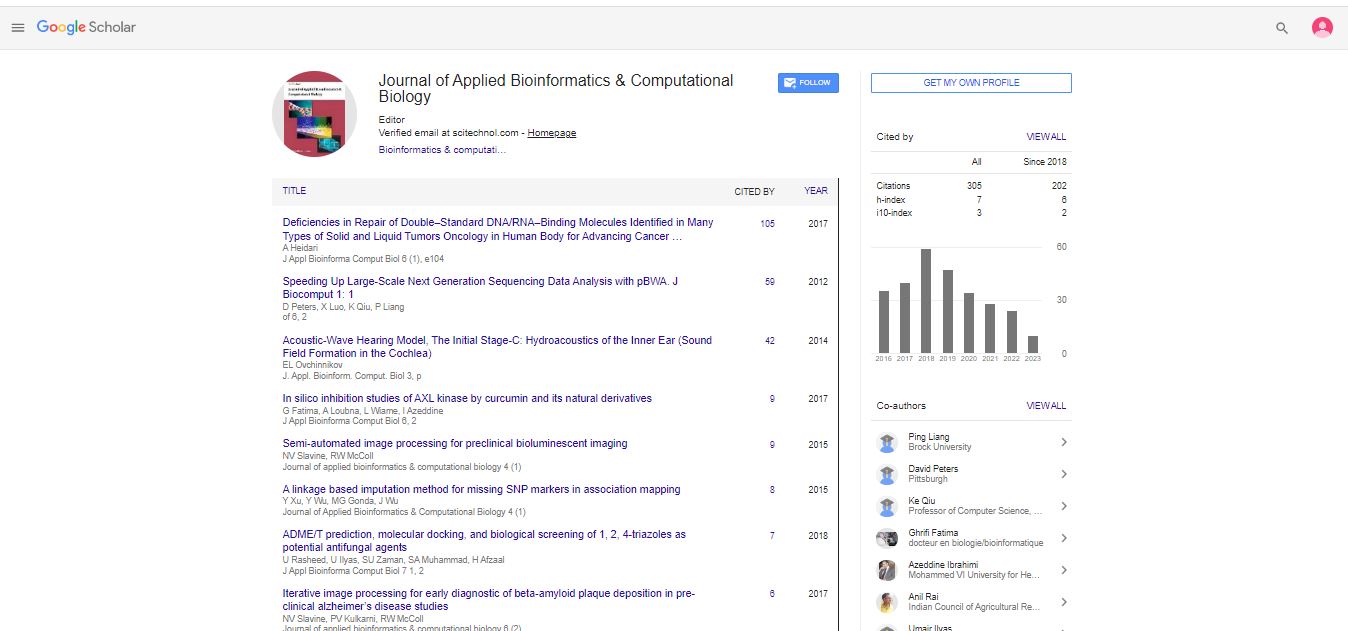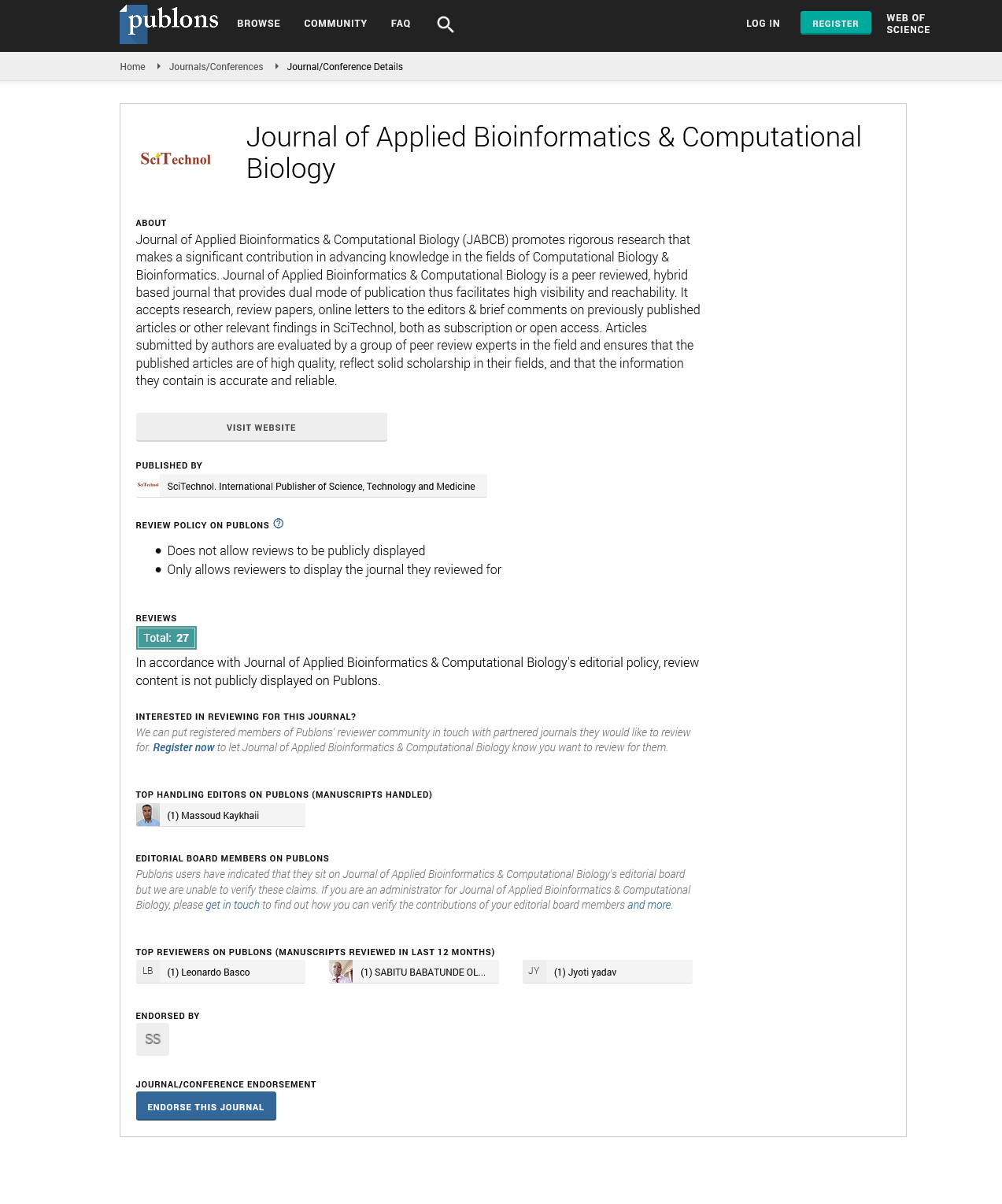Impact of NAc on the glycosidic linkage flexibility of carbohydrate-peptide complexes
Mehmet Gokhan Gokcen
Turkish-German University, Turkey
: J Appl Bioinforma Comput Biol
Abstract
A simple approach to exploring the impact of glycosylation on the conformation and biological activity of proteins is to investigate model glycopeptide species with one single monosaccharide moiety attached to amino acids. The goal originates in the experimental observation that truncation of the oligosaccharides antennae of glycoproteins does not yield dramatic conformational and immunological changes, as opposed to the removal of the first glycan moiety. In the course of evolution, prokaryotic organisms developed a considerable diversity in the supramolecular architecture of their multilayered cell boundaries. One of the most commonly observed bacterial cell surface structures is two-dimensional arrays of proteinaceous subunits termed S-layers. They represent almost universal features on archaebacteria cell envelopes and were already detected in hundreds of different species of nearly every taxonomic group of walled eubacteria. S-layer like structures have also been observed in bacterial sheaths and on the surface of cell wall eukaryotic algae. Since S-layers are found in Grampositive and Gram-negative eubacteria and archaebacteria they can be associated with quite a different cell envelope structures such as peptidoglycans (glucose-serine complexes). In fact, chemical analyses and genetic studies of S-layers of a variety of eubacteria revealed that composed of a protein or glycoprotein species. The glycosidic linkage flexibilities of glucopyranoseserine species in aqueous solution are difficult to investigate using conventional tools due to their high flexibility and solvent effects. Quantum chemical techniques provide a solution for these studies. We present here the structural and energetic properties of glucose-serine complexes in water and the impact of NAc on the structural and energetic properties of glucoseserine using first-principles calculations.
Biography
Mehmet Gokhan Gokcen has completed his undergraduate, graduate and PhD degrees from Bogazici University Department of Mechanical Engineering. Since September 2017, he has been working as Assistant Professor in the Department of Mechanical Engineering at Turkish-German University. His expertise is in numerical simulation of physical systems, especially finite element analysis and computational fluid dynamics. He is currently investigating the role of glycolysis in Alzheimer's and Parkinson's disease using density functional theory and classical mechanics approaches. He is contributing to the research on the effects of genetics and on the mechanisms of oxidative stress and mitochondrial dysfunction in Alzheimer's and Parkinson's diseases.
E-mail: gokcen@tau.edu.tr
 Spanish
Spanish  Chinese
Chinese  Russian
Russian  German
German  French
French  Japanese
Japanese  Portuguese
Portuguese  Hindi
Hindi 
